Research on Power Coordination Control Strategy of Microgrid Based on Reconfigurable Energy Storage
Abstract
1. Introduction
2. Microgrid System with Reconfigurable Energy Storage
2.1. Microgrid Overall Structure
2.2. A New Reconfigurable Energy Storage System
2.2.1. Establishment of State Equation and Output Equation of Lithium Battery Model
2.2.2. Linearization
2.2.3. Initialize and Cycle Recursive Calculation
- Initialization stage:
- Prediction stage:Predicted value of state variable:The covariance matrix of state variable prediction error:
- Correction stage:Gain matrix expression:State variable correction:The covariance matrix of state variable correction error:
- Iteration Loop: Return to Step 2. to estimate the next time step.
3. Control Strategy of Microgrid Unit Operation
3.1. Charge and Discharge Control Strategy of Reconfigurable Battery
3.2. Control Strategy of Ultracapacitory
4. Microgrid Power Coordination Control Strategy
4.1. Energy Flow Relationship of the Microgrid System
4.2. Coordinated Power Control of Microgrid
5. Simulated Analysis
6. Conclusions
- In this paper, traditional energy storage is replaced with reconfigurable battery energy storage, and the reliability and stability of the microgrid system are enhanced by leveraging the structural advantages of the reconfigurable network.
- During the operation of the microgrid, the charge/discharge control strategy proposed in this paper enables constant current charge/discharge of the energy storage system and extends the service life of the battery.
- The control strategy proposed in this paper fully utilizes the complementary characteristics of reconfigurable battery energy storage and supercapacitors. It can effectively and rapidly adjust the system power output, suppress power fluctuations caused by variations in photovoltaic power generation and load mutations in the microgrid system, and improve the quality of the system’s output power.
- The research results of this paper provide theoretical support for the new energy storage compensation in photovoltaic power generation. This approach can also be applied to other renewable energy generation systems, such as wind power and tidal power. In the future, large-scale experiments or practical applications can be conducted to verify the feasibility of this energy storage compensation method in actual power grid environments.
Author Contributions
Funding
Data Availability Statement
Conflicts of Interest
References
- Li, B.; Chen, M.; Zhong, H.; Ma, Z.; Liu, D.; He, G. Summary of long-term planning for high-proportion renewable energy new power systems. Proc. CSEE 2023, 43, 555–581. [Google Scholar]
- Shamarova, N.; Suslov, K.; Ilyushin, P.; Shushpanov, I. Review of Battery Energy Storage Systems Modeling in Microgrids with Renewables Considering Battery Degradation. Energies 2022, 15, 6967. [Google Scholar] [CrossRef]
- Yang, F.; Ren, Y.; Yun, P.; Xue, Y.; Lian, M.; Xu, W. Coordinated Control and Power Distribution of Hybrid Energy Storage System of Twostage Lithium Batteries and Supercapacitors. Renew. Energy Sources 2019, 37, 361–366. [Google Scholar]
- Arunkumar, C.R.; Manthati, U.B.; Srinivas, P. Accurate Modelling and Analysis of Battery–supercapacitor Hybrid Energy Storage System in DC Microgrid Systems. Energy Syst. 2021, 13, 1–19. [Google Scholar] [CrossRef]
- Hai, T.; Fan, P.; Wang, J.; Lin, G. Photovoltaic Application Based on Hybrid Energy Storage of Super Capacitor and Battery. Renew. Energy Sources 2024, 42, 1219–1225. [Google Scholar]
- Leng, D.; Polmai, S. Virtual Synchronous Generator Based on Hybrid Energy Storage System for PV Power Fluctuation Mitigation. Appl. Sci. 2019, 9, 5099. [Google Scholar] [CrossRef]
- Yang, P.; Chen, Z.; Luo, T.; Zhu, J.; Liu, B.; Chen, X. Control method of photovoltaic power generation and hybrid energy storage based on VSG. Power Syst. Clean Energy 2023, 39, 83–91+113. [Google Scholar]
- Zhang, C.; Dong, J.; Liu, J.; Ben, B. Control strategy of hybrid energy storage system based on batteries and supercapacitors. Trans. China Electrotech. Soc. 2014, 29, 334–340. [Google Scholar]
- Dang, J.; Xiao, D.; Zhang, X.; Jia, R.; Jiao, Y. Optimal configuration of retired battery reconfigurable network considering switching losses. J. Energy Storage 2024, 101, 113735. [Google Scholar] [CrossRef]
- Muhammad, S.; Rafique, M.U.; Li, S.; Shao, Z.; Wang, Q.; Liu, X. Reconfigurable Battery Systems: A Survey on Hardware Architecture and Research Challenges. ACM Trans. Des. Autom. Electron. Syst. 2019, 24, 1–27. [Google Scholar] [CrossRef]
- Bajaj, A.; Li, W.; Xiong, M.; Mou, J.; Garg, A.; Gao, L.; Bose, B. A Novel Self-Reconfigurable Battery Pack Design with and without Active Cell Balancing. Energy Technol. 2024, 12, 2401055. [Google Scholar] [CrossRef]
- Wan, G.; Zhang, Q.; Zhang, W.; Li, J.; Li, M.; Li, S.; Fu, Z.; Liu, J. Research on topology technology of integrated battery energy storage system with reconfigurable battery and converter. J. Energy Storage 2023, 96, 112688. [Google Scholar] [CrossRef]
- Momayyezan, M.; Hredzak, B.; Agelidis, V.G. A Load-Sharing Strategy for the State of Charge Balancing Between the Battery Modules of Integrated Reconfigurable Converter. IEEE Trans. Power Electron. 2017, 32, 4056–4063. [Google Scholar] [CrossRef]
- Guo, J.; Wang, X.; Sun, C. Balanced Charging Method of Power Batteries with Reconstructed Series-Parallel Structure. Electr. Power Autom. Equip. 2019, 39, 163–168. [Google Scholar]
- Momayyezan, M.; Abeywardana, D.B.; Hredzak, B.; Agelidis, V.G. Integrated Reconfigurable Configuration for Battery/Ultracapacitor Hybrid Energy Storage Systems. IEEE Trans. Energy Convers. 2016, 31, 1583–1590. [Google Scholar] [CrossRef]
- Zhang, C.; Shi, M.; Xu, C.; Huang, Z.; Ci, S. Intrinsic Safety Mechanism and Example Analysis of Energy Storage System Based on Dynamic Reconfigurable Battery Network. Energy Storage Sci. Technol. 2022, 11, 2442–2451. [Google Scholar]
- Ci, S.; Zhang, C.; Liu, B.; Zhou, Y. Dynamic Reconfigurable Battery Energy Storage Technology: Principle and Application. Energy Storage Sci. Technol. 2023, 12, 3445–3455. [Google Scholar]
- Liu, X.; Jiang, L.; Gao, S.; Zheng, T.; Guo, Y. SOC Equalization Strategy of Reconfigurable Energy Storage System Based on Active Equalization Technology. J. Electr. Eng. 2025, 1–10. Available online: http://kns.cnki.net/kcms/detail/10.1289.TM.20241115.1058.002.html (accessed on 15 January 2025).
- Ju, Y.J.; Lin, S.Q.; Gang, L. Simulation of Second-Order RC Equivalent Circuit Model of Lithium Battery Based on Variable Resistance and Capacitance. J. Cent. South Univ. 2020, 27, 2606–2613. [Google Scholar]
- Nie, X.; Lai, J. Review of Global MPP Tracking Control Methods for PV Arrays in Partial Shadow. Grid Technol. 2014, 38, 3279–3285. [Google Scholar]
- Peng, S.; Cao, Y.; Cai, X. Access Mode and Control Strategy of Large Battery Energy Storage System to Microgrid. Autom. Electr. Power Syst. 2011, 35, 38–43. [Google Scholar]
- Zheng, T.W.; Chen, L.J.; Chen, T.Y.; Mei, S.W. Technology and Prospect of Virtual Synchronous Generator. Autom. Electr. Power Syst. 2015, 39, 165–175. [Google Scholar]
- Lü, Z.; Sheng, W.; Zhong, Q.; Liu, H.; Zeng, Z.; Yang, L.; Liu, L. Virtual Synchronous Generator and its Application in Microgrid. Proc. CSEE 2014, 34, 2591–2603. [Google Scholar]
- Lei, Z.; Wang, F.; Gao, Y.; Ruan, Y. Research Status and Application Analysis of Bidirectional DC-DC Converter for DC Microgrid. Trans. China Electrotech. Soc. 2016, 31, 137–147. [Google Scholar]
- Banguero, E.; Correcher, A.; Pérez-Navarro, Á.; Morant, F.; Aristizabal, A. A Review on Battery Charging and Discharging Control Strategies: Application to Renewable Energy Systems. Energies 2018, 11, 1021. [Google Scholar] [CrossRef]


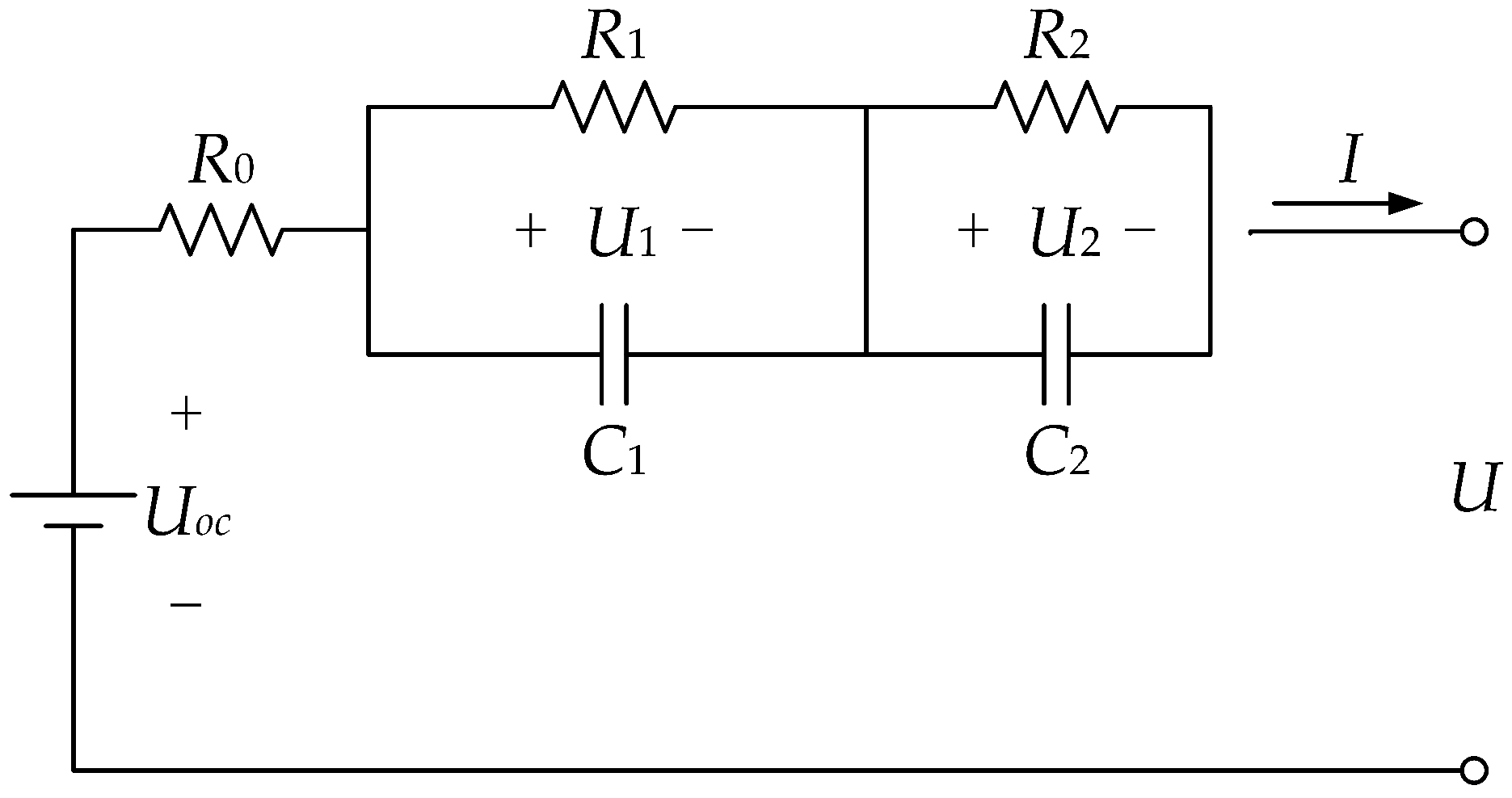
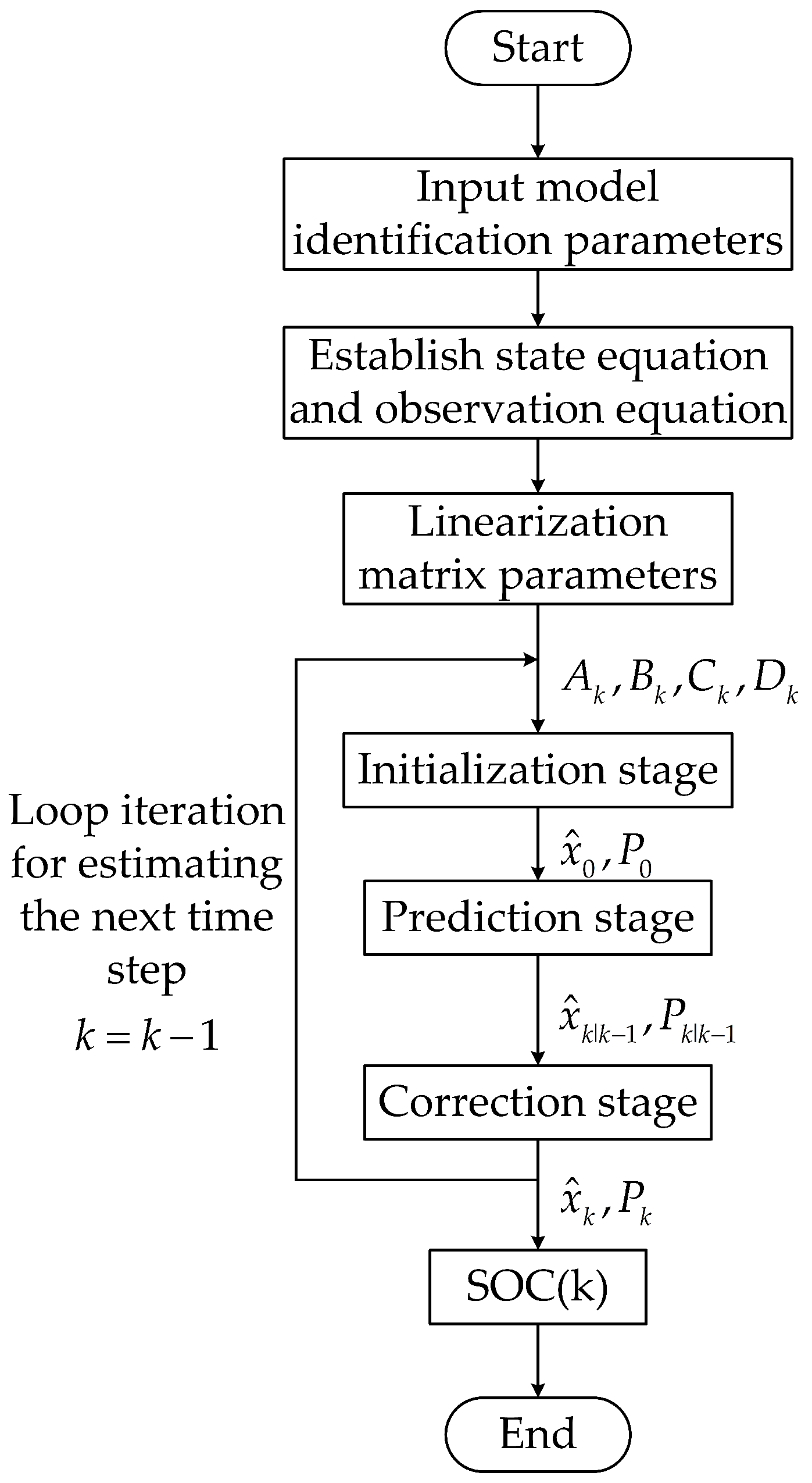
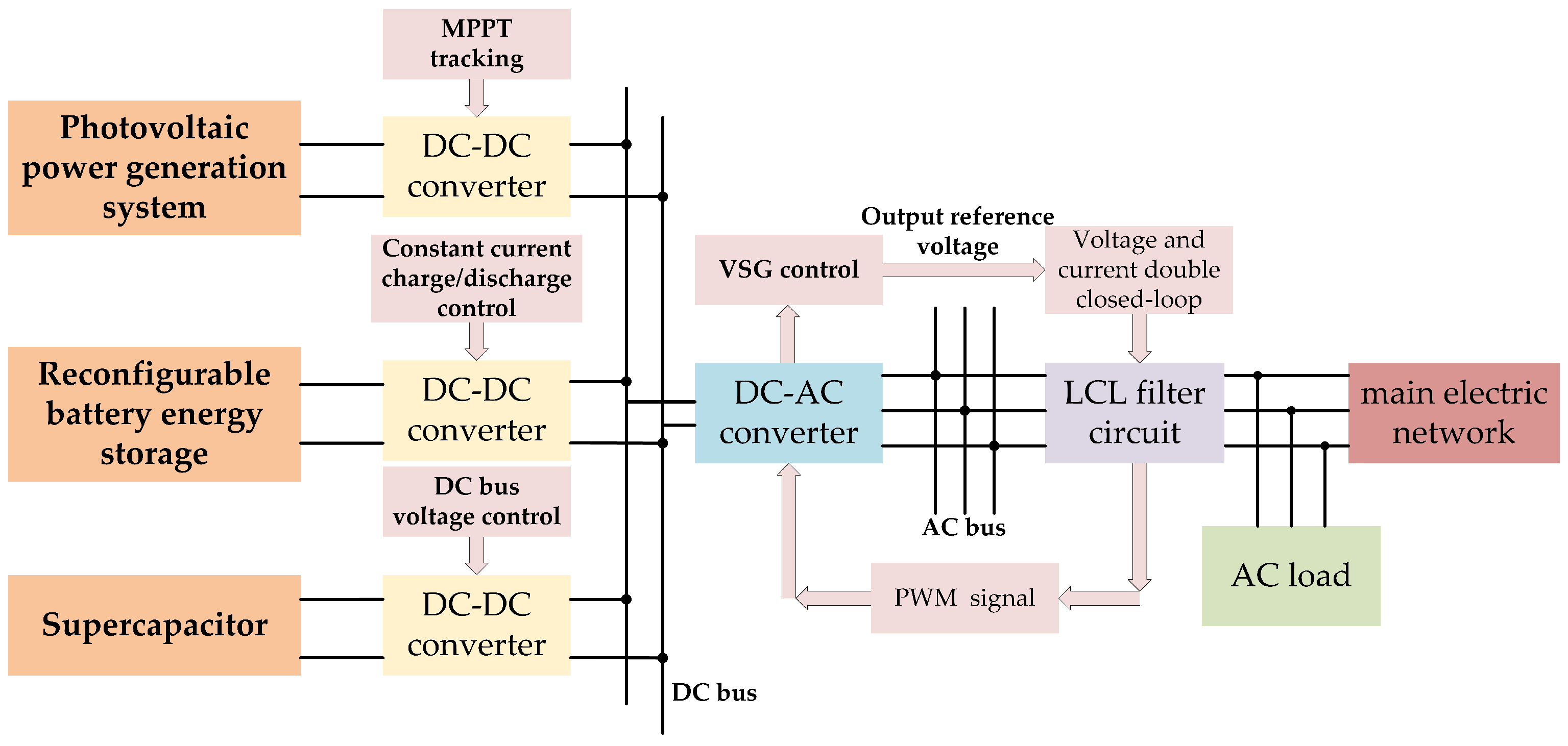



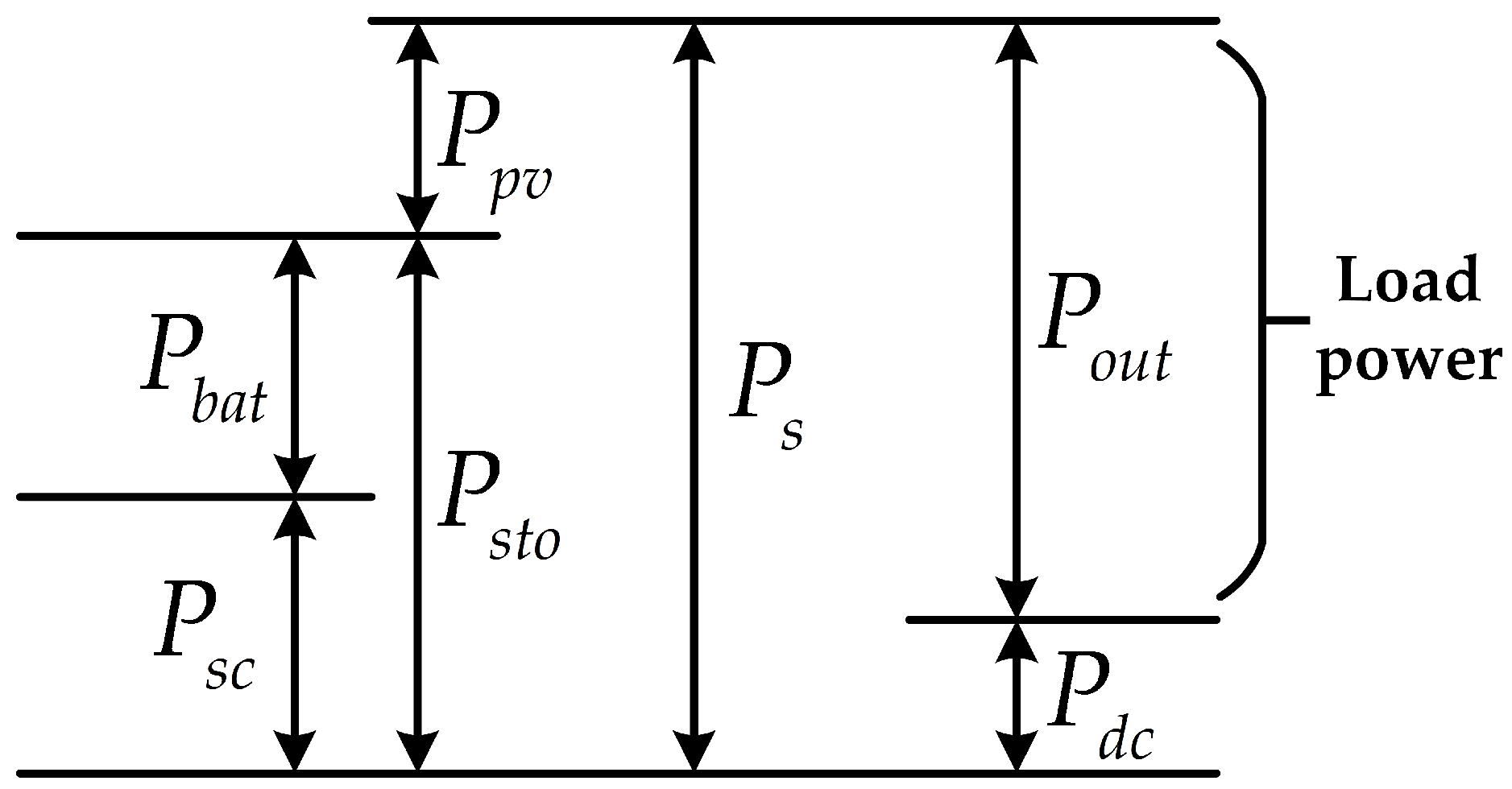

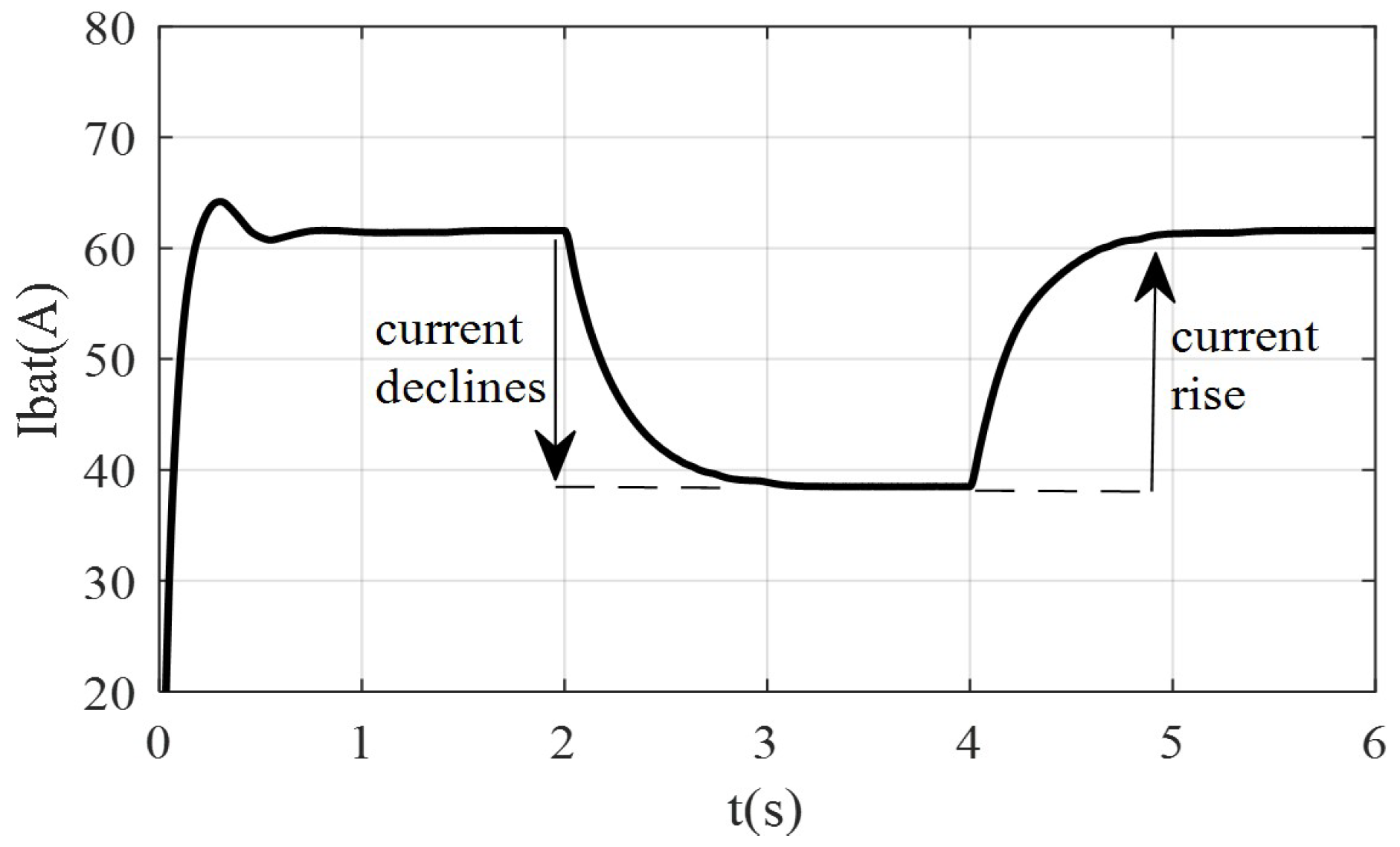
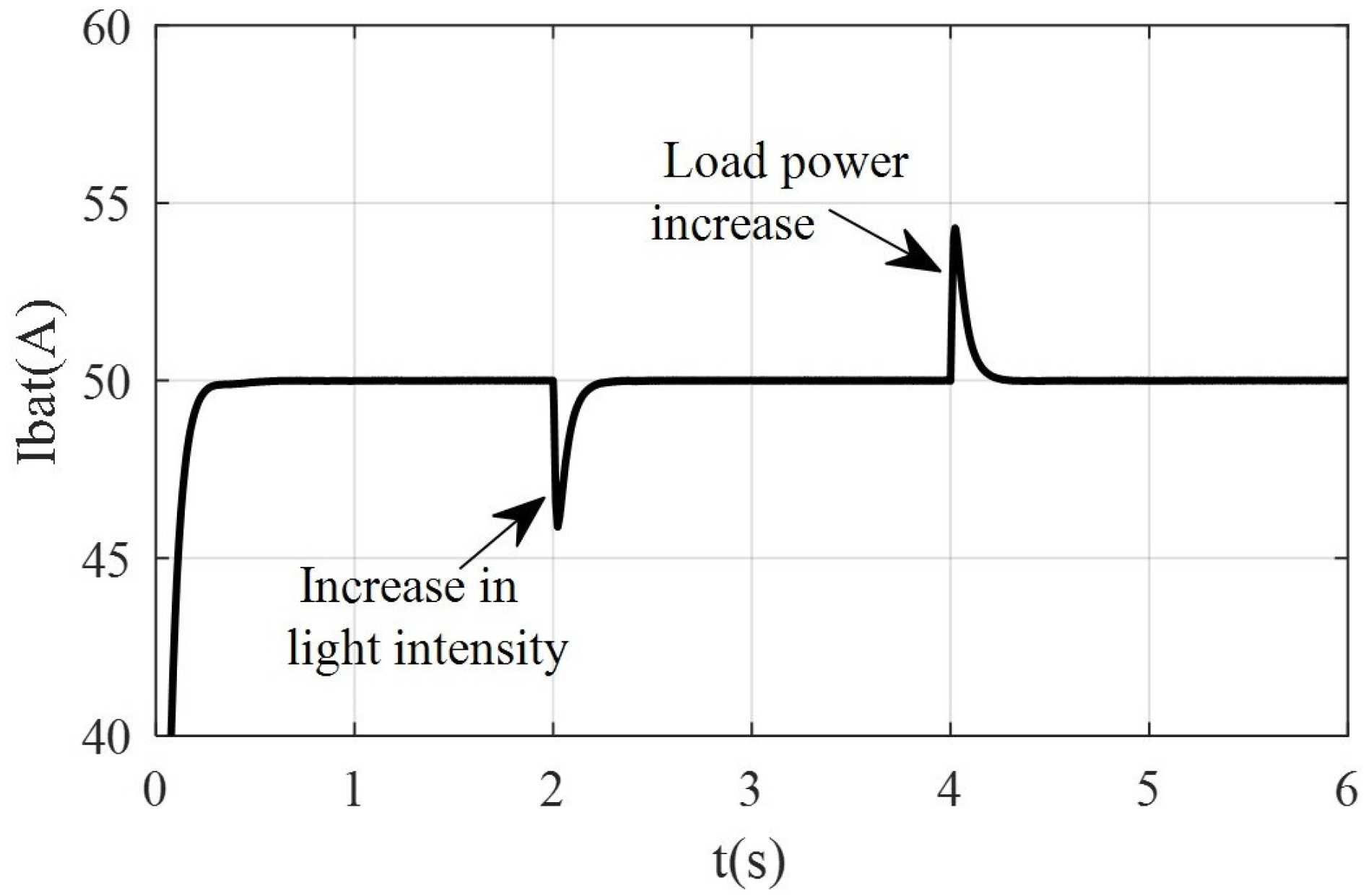
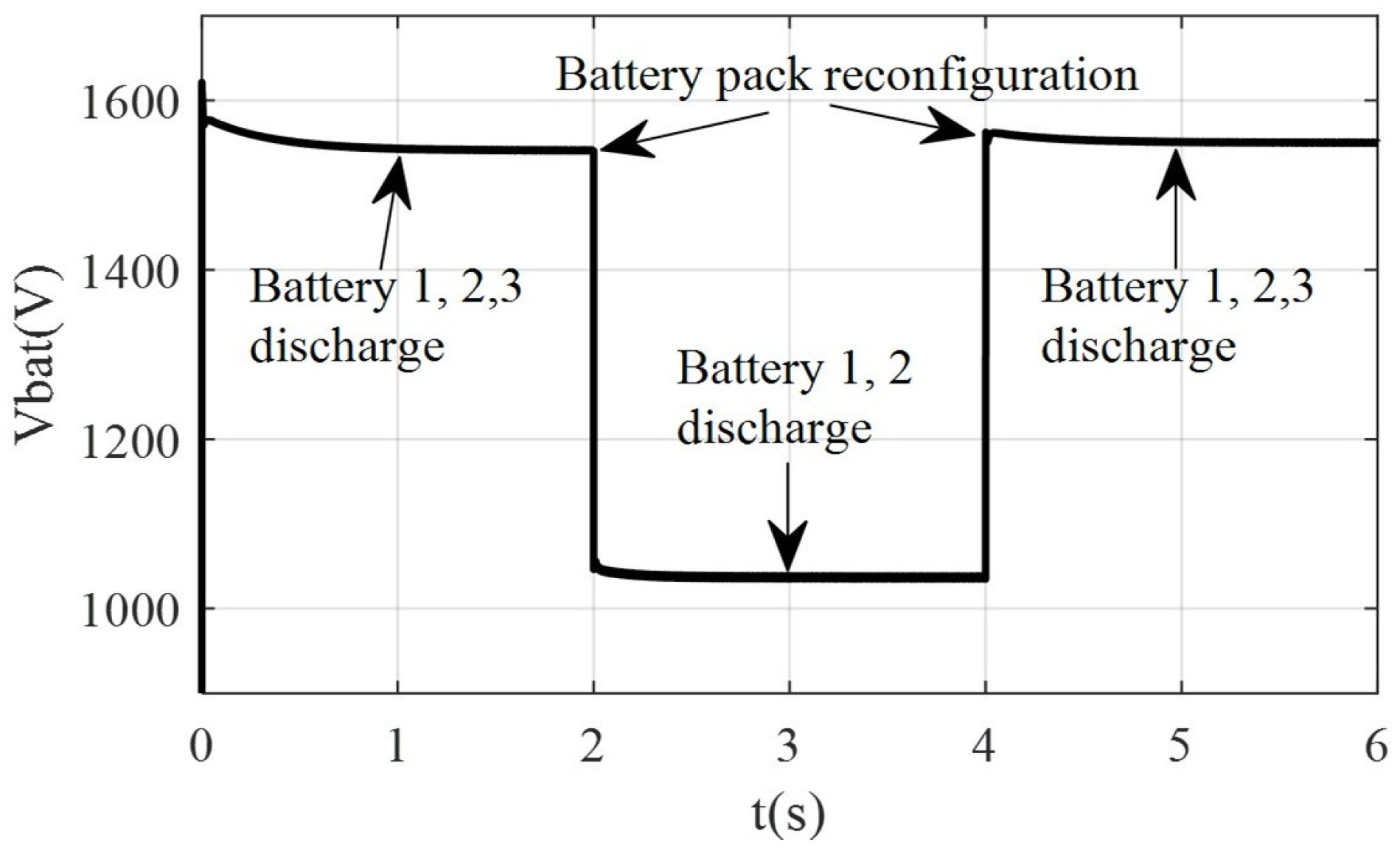
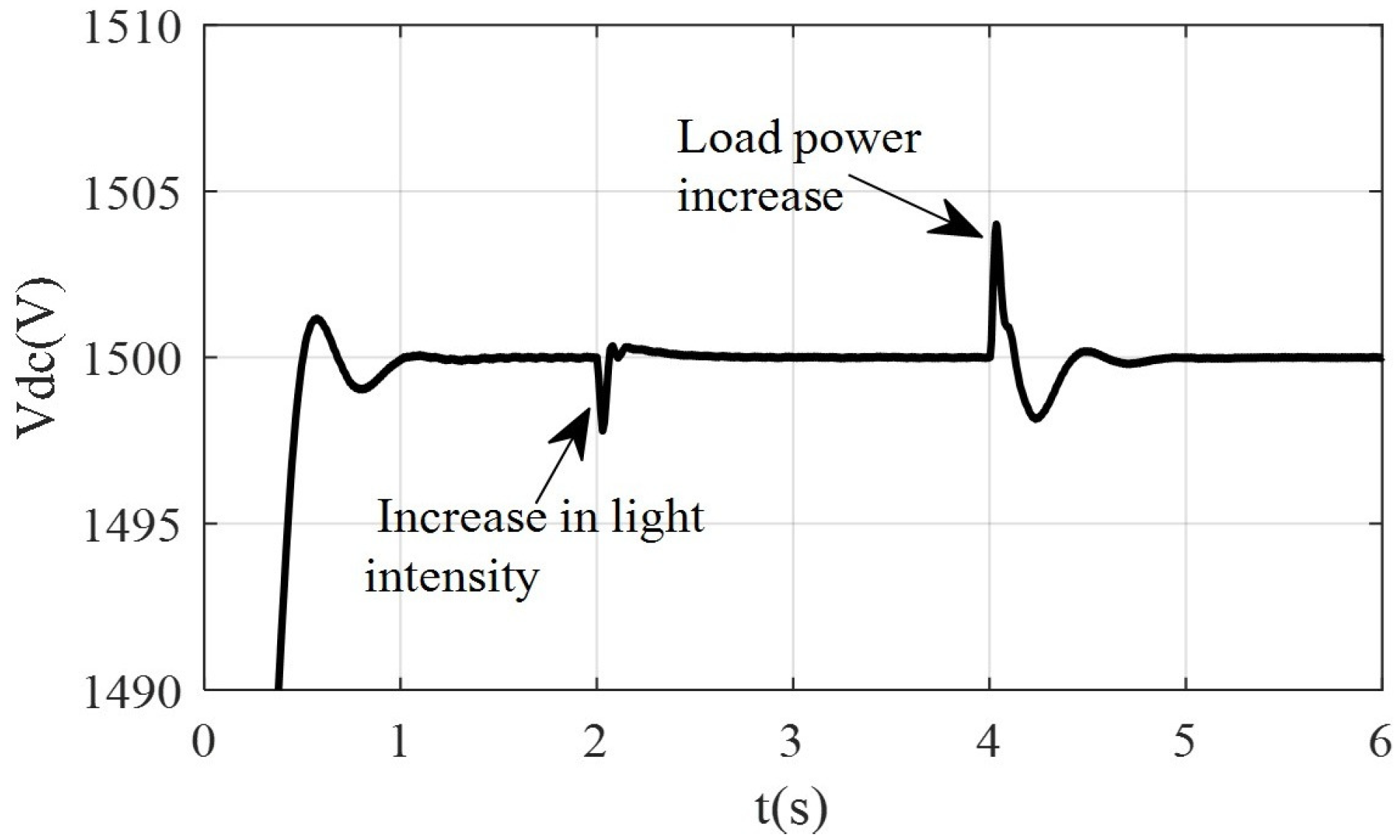
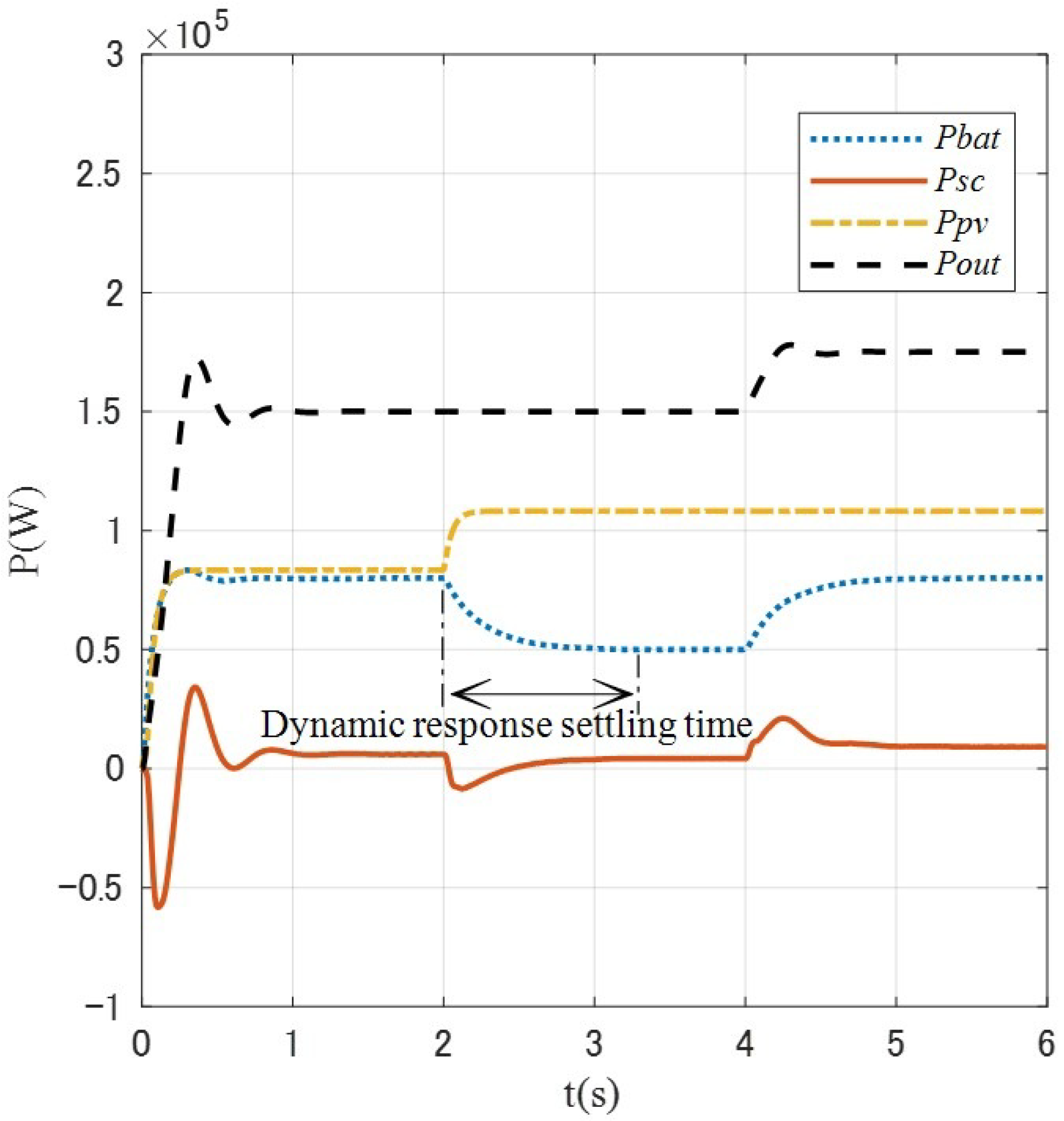
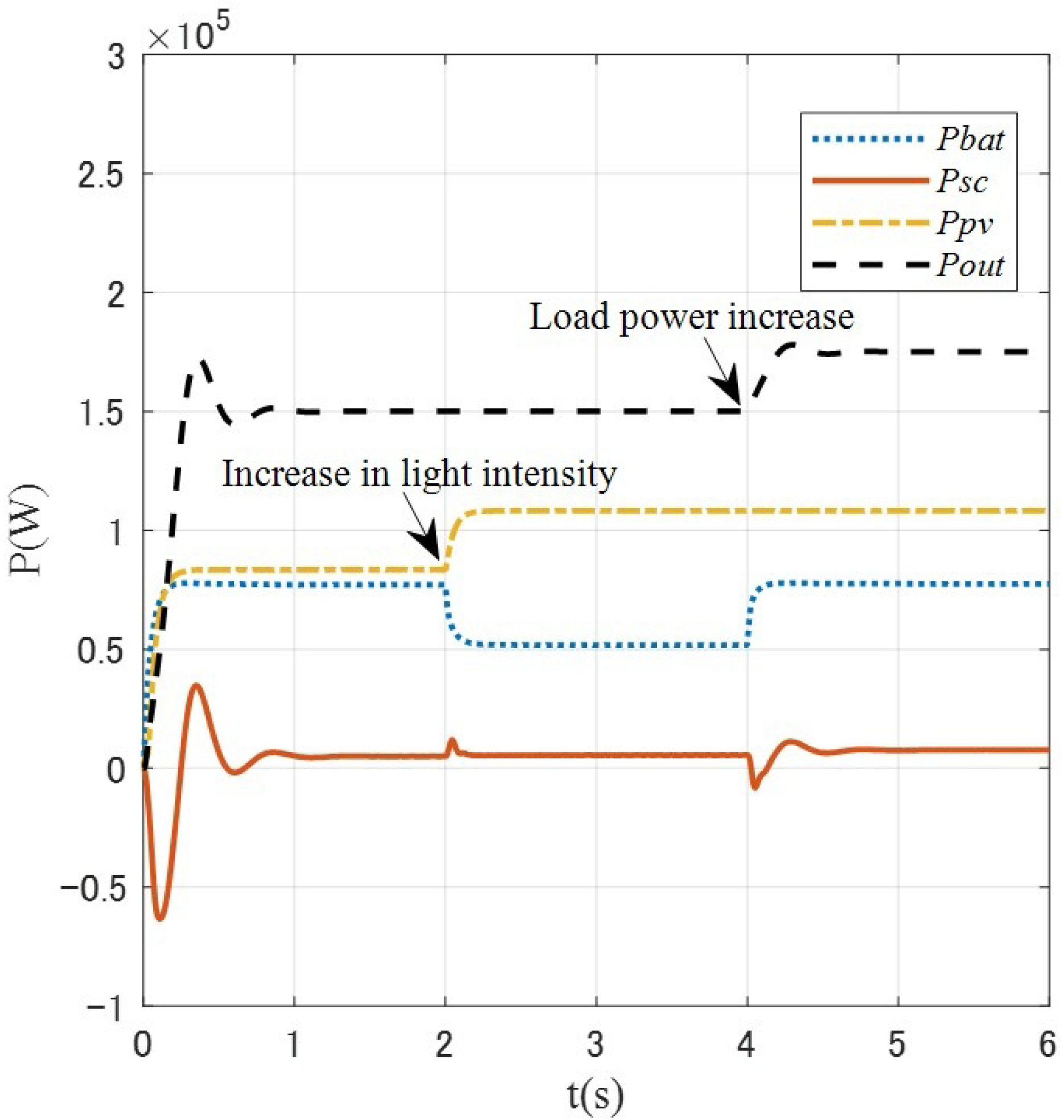
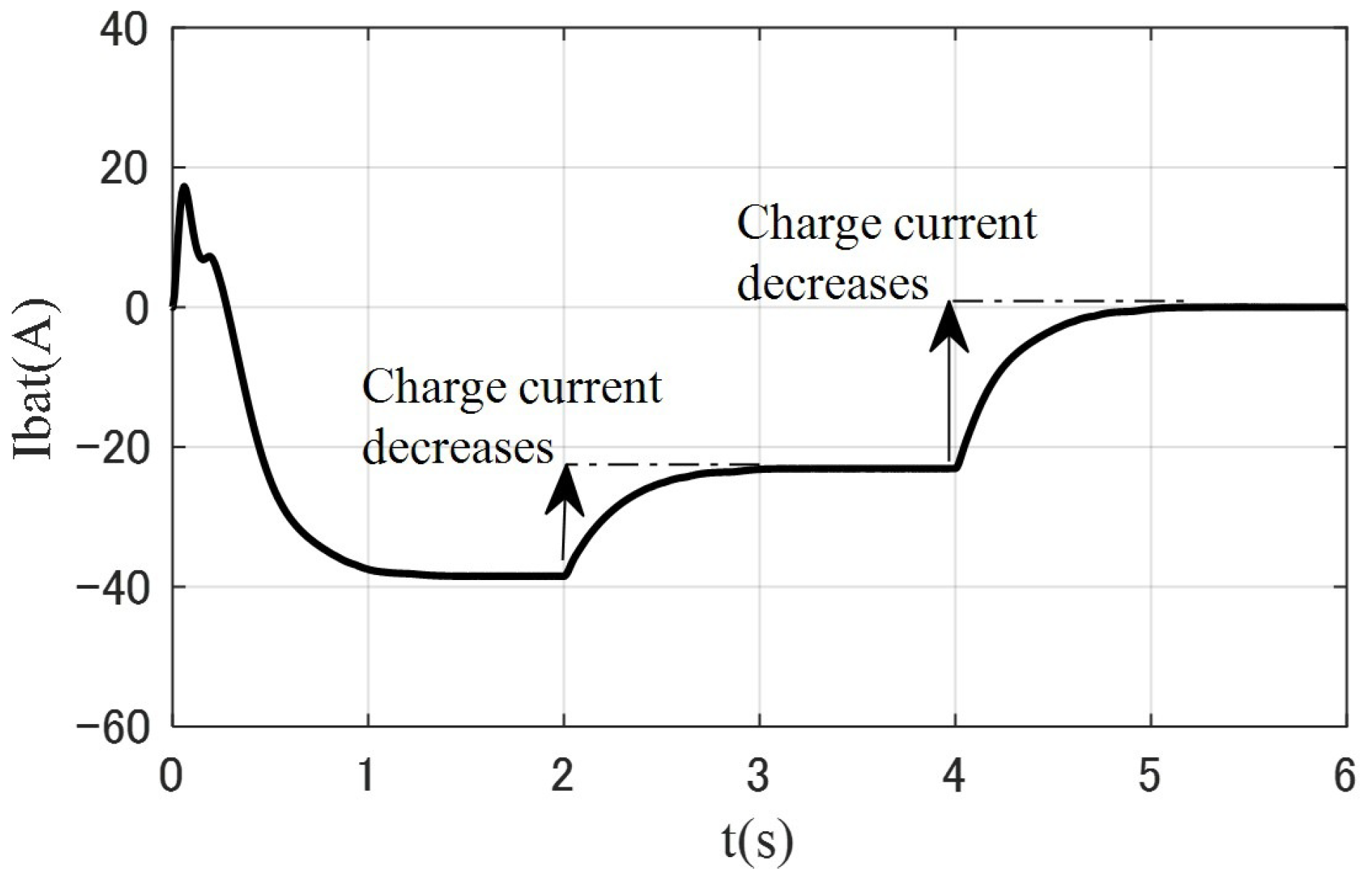
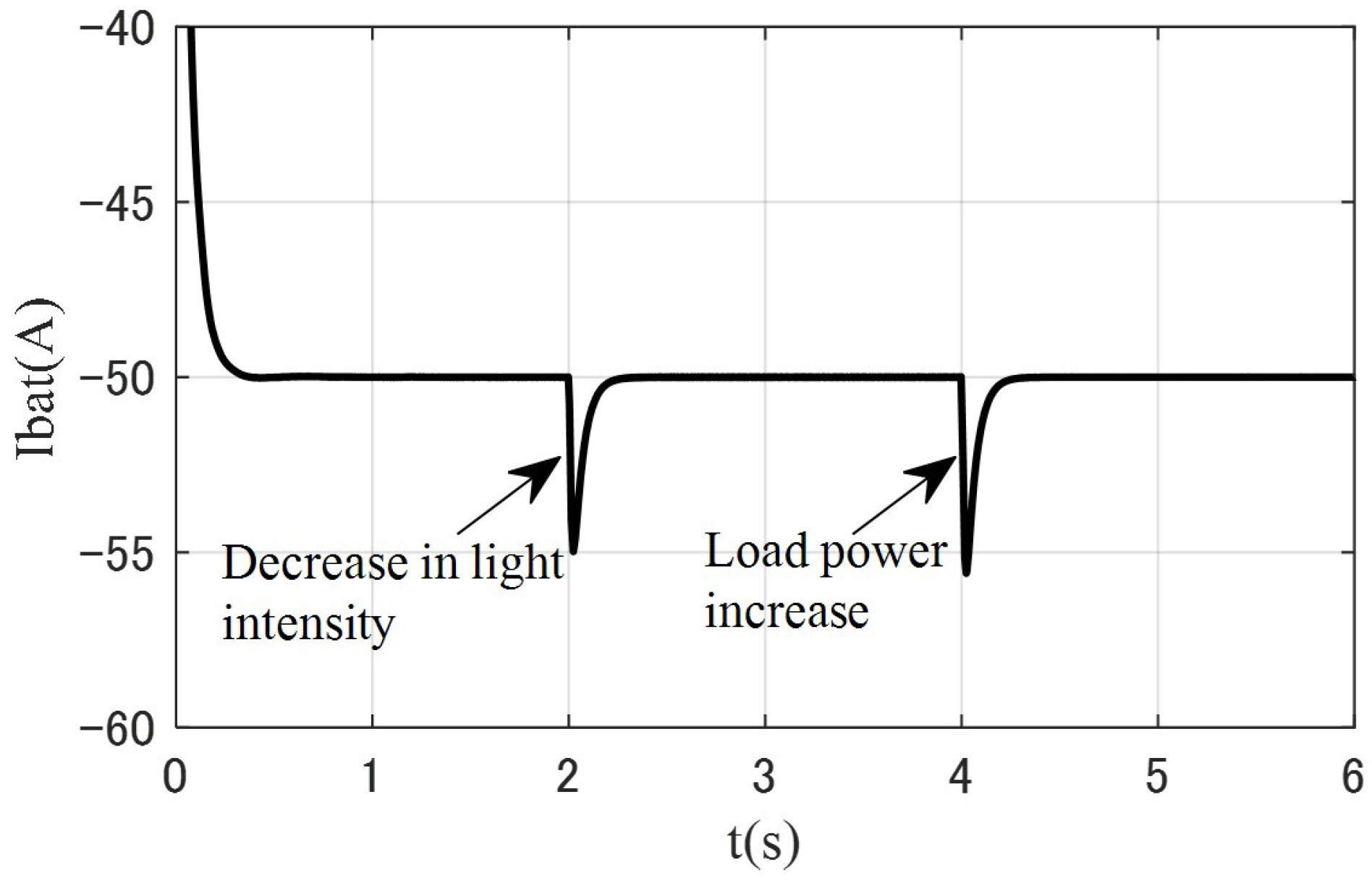

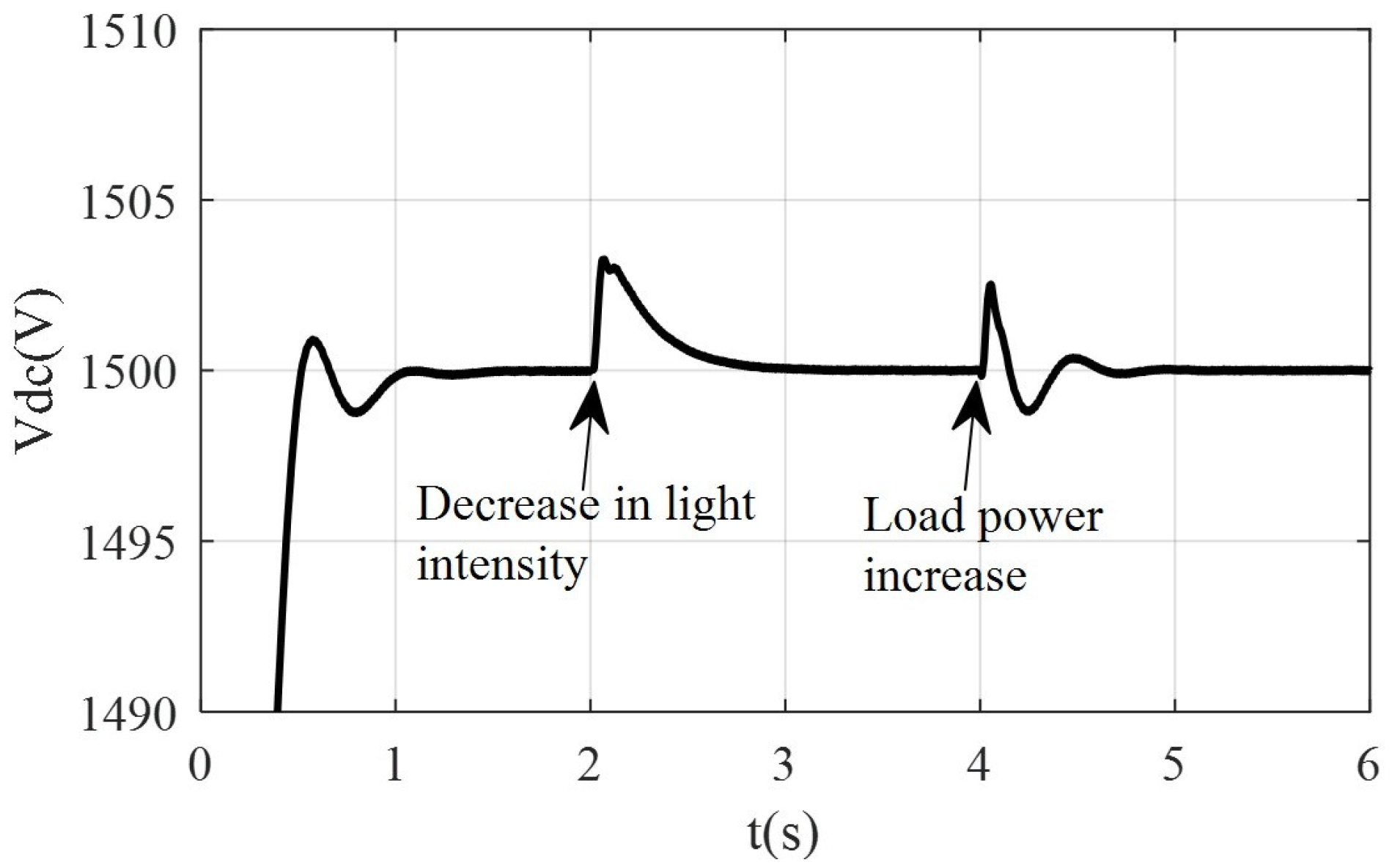


| Parameter | Numerical Value |
|---|---|
| Initial SOC value of battery pack 1: SOC1 | 70% |
| Initial SOC value of battery pack 2: SOC2 | 68% |
| Initial SOC value of battery pack 3: SOC3 | 70% |
| Initial SOC value of battery pack 4: SOC4 | 70% |
| Terminal voltage of each battery pack/V | 434.73∼581.99 (SOC 5∼95%) |
| The capacity of each battery pack/Ah | 20 |
| Reference DC bus voltage/V | 1500 |
| The absolute value of constant current charge/discharge current/A | 50 |
| Initial AC load/kW | 150 |
| Simulation time/s | 6 |
| Battery’s SOC | 0 s | 2 s | 4 s | 6 s |
|---|---|---|---|---|
| SOC1 | 70% | 69.86% | 69.72% | 69.58% |
| SOC2 | 68% | 67.86% | 67.72% | 67.58% |
| SOC3 | 66% | 65.86% | 65.86% | 65.72% |
| SOC4 | 64% | 64% | 64% | 64% |
| Battery’s SOC | 0 s | 2 s | 4 s | 6 s |
|---|---|---|---|---|
| SOC1 | 70% | 70% | 70% | 70% |
| SOC2 | 68% | 68% | 68% | 68% |
| SOC3 | 66% | 66.14% | 66.14% | 66.14% |
| SOC4 | 64% | 64.14% | 64.28% | 64.28% |
Disclaimer/Publisher’s Note: The statements, opinions and data contained in all publications are solely those of the individual author(s) and contributor(s) and not of MDPI and/or the editor(s). MDPI and/or the editor(s) disclaim responsibility for any injury to people or property resulting from any ideas, methods, instructions or products referred to in the content. |
© 2025 by the authors. Licensee MDPI, Basel, Switzerland. This article is an open access article distributed under the terms and conditions of the Creative Commons Attribution (CC BY) license (https://creativecommons.org/licenses/by/4.0/).
Share and Cite
Liu, X.; Jiang, L.; Zheng, T.; Zhu, Z. Research on Power Coordination Control Strategy of Microgrid Based on Reconfigurable Energy Storage. Energies 2025, 18, 1040. https://doi.org/10.3390/en18051040
Liu X, Jiang L, Zheng T, Zhu Z. Research on Power Coordination Control Strategy of Microgrid Based on Reconfigurable Energy Storage. Energies. 2025; 18(5):1040. https://doi.org/10.3390/en18051040
Chicago/Turabian StyleLiu, Xiaoxi, Libo Jiang, Tianwen Zheng, and Zhengwei Zhu. 2025. "Research on Power Coordination Control Strategy of Microgrid Based on Reconfigurable Energy Storage" Energies 18, no. 5: 1040. https://doi.org/10.3390/en18051040
APA StyleLiu, X., Jiang, L., Zheng, T., & Zhu, Z. (2025). Research on Power Coordination Control Strategy of Microgrid Based on Reconfigurable Energy Storage. Energies, 18(5), 1040. https://doi.org/10.3390/en18051040






